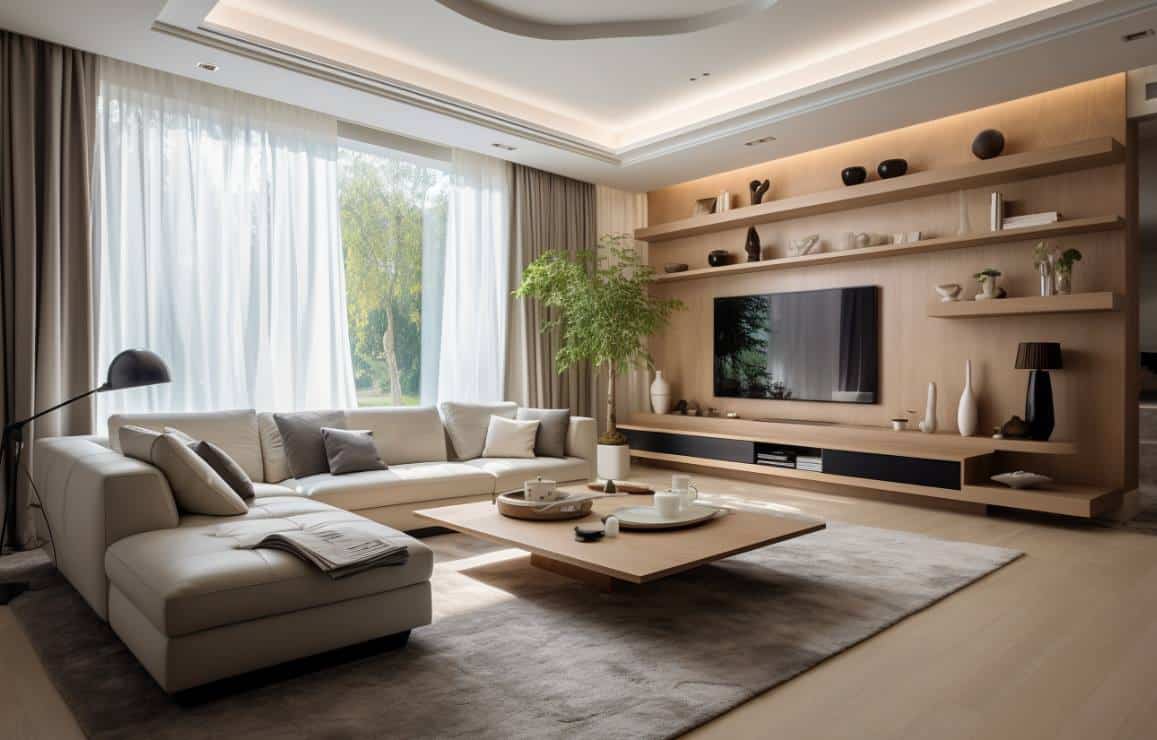LED lighting fixtures are an excellent choice for illuminating your home. With their energy efficiency, long lifespan, and versatility, LED lights have become increasingly popular among homeowners. However, with so many options available, choosing the perfect LED lighting fixture for your home can be a daunting task.
In this blog post, we will guide you through the process of selecting the ideal LED lighting fixture that suits your needs and enhances the ambiance of your living space. We will discuss key factors to consider, such as the color temperature, brightness level, and lighting design. Additionally, we will provide tips on how to determine the right size and placement of LED fixtures for different areas of your home.
By the end of this article, you will have a clear understanding of how to make an informed decision when it comes to choosing the perfect LED lighting fixture to create a comfortable and inviting atmosphere in your home.
Let’s dive in!
Factors for Choosing the Perfect LED Lighting Fixture for Your Home
- Brightness
When using LEDs to replace incandescent bulbs, it is important to have a clear understanding of the distinction between watts and lumens. Watts, in this context, represents the amount of energy consumed by the bulb, while lumens indicate the level of brightness or the amount of light produced. By knowing these two measurements, you can make an informed decision when choosing the right bulb for your needs.
The higher the lumen value, the brighter the bulb. This means that if you want a bulb that emits a lot of light, you should look for a higher lumen value. On the other hand, if you prefer a dimmer light, you would opt for a lower lumen value.
The efficiency of a bulb is measured in lumens per watt. This metric tells you how much energy is required to generate one lumen of light. In the case of incandescent bulbs, they typically produce around 15 lumens per watt. This means that for every watt of energy consumed, only 15 lumens of light are produced. On the other hand, LEDs are much more efficient, producing an impressive 75-100 lumens per watt. This makes them six times more efficient than incandescent bulbs.
In summary, when replacing incandescent bulbs with LEDs, it is crucial to consider both watts and lumens. By understanding the difference between these two measurements and the efficiency of each bulb, you can make an informed decision that not only saves energy but also provides the desired level of brightness.
- Warm and Cool LEDs
LED pendant light fixtures offer a wide range of capabilities, including the ability to customize the tone of the light. The tone is determined by the color quality of the light, measured in Kelvin (K). Warm light falls within the lower Kelvin range of about 1000 to 4000K and has an amber quality, creating a cozy atmosphere in relaxing rooms. On the other hand, higher Kelvin light above 7000K has a blue quality, which is more suitable for utility rooms, kitchens, and bathrooms. The range between 4000 and 7000 Kelvin is relatively neutral in tone.
- Dimming Capability
LED lights offer the convenience of adjusting their brightness to suit your preference or mood perfectly. This feature not only helps you save energy and extend the lifespan of the lights, but it also has a profound impact on human life. By dimming a light below its maximum performance, you not only reduce the strain on the LED lamp but also save on maintenance and replacement costs. Moreover, the ability to dim lights can contribute to preventing eye strain and enhancing concentration by providing an optimal level of brightness that is comfortable for your eyes.
- Features
Features refer to the additional attributes or capabilities that a lighting fixture may possess.
Heat capacity: This pertains to a lighting fixture’s ability to endure high temperatures and dissipate heat. While LED lights generate less heat compared to incandescent and fluorescent lighting, they still require effective cooling to maintain their performance and lifespan. It is advisable to select a lighting fixture with a low heat capacity and a well-designed heat sink.
- Certifications
Certifications are approvals or accreditations that indicate a light bulb’s quality, safety, performance, and compliance with standards and regulations. LED lights can have various certifications based on their product type and market region. Some common certifications for LED lights include:
- UL: Underwriters Laboratories is a well-known safety testing and evaluation agency in the United States. It is an independent, non-profit organization that conducts public safety testing for products and components. UL certification signifies that a product meets UL’s safety standards and requirements.
- DLC: DesignLights Consortium is an organization that promotes energy efficiency and quality in commercial LED lighting solutions. It consists of utility companies, energy efficiency organizations, manufacturers, lighting designers, and government entities. DLC certification indicates that a product meets DLC’s technical requirements and performance criteria.
When choosing LED lights, it is recommended to look for UL certification for safety and DLC certification for energy efficiency and quality. You can search for UL-certified products on the UL Certification Database and DLC-certified products on the DLC Qualified Products Lists.
Conclusion
In conclusion, choosing the perfect LED lighting fixture for your home involves considering several factors. First, understanding the distinction between watts and lumens helps you determine the right level of brightness. Additionally, considering the tone of the light and its dimming capability allows you to create the desired ambiance. It is also important to look for features such as heat capacity and certifications like UL and DLC for safety and energy efficiency. By carefully considering these factors, you can select LED lighting fixtures that enhance the overall atmosphere of your home while saving energy and providing long-lasting performance.

Speaks from heart, always too passionate and driven by emotions. Spins the words with kindness & sharpness, intriguing your ever-inscrutable minds.





